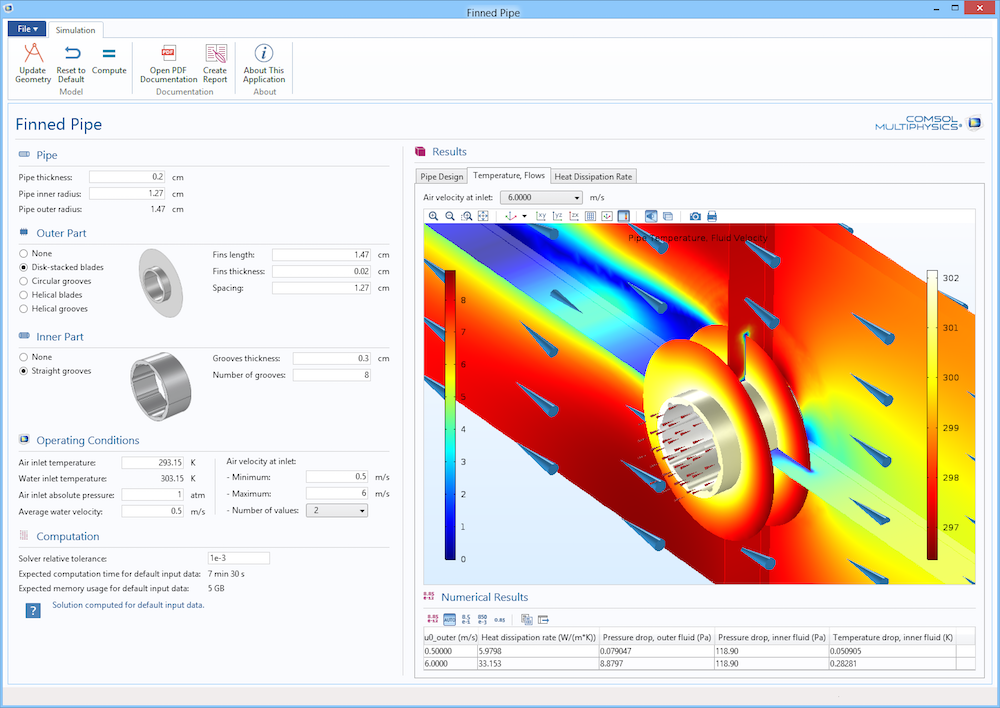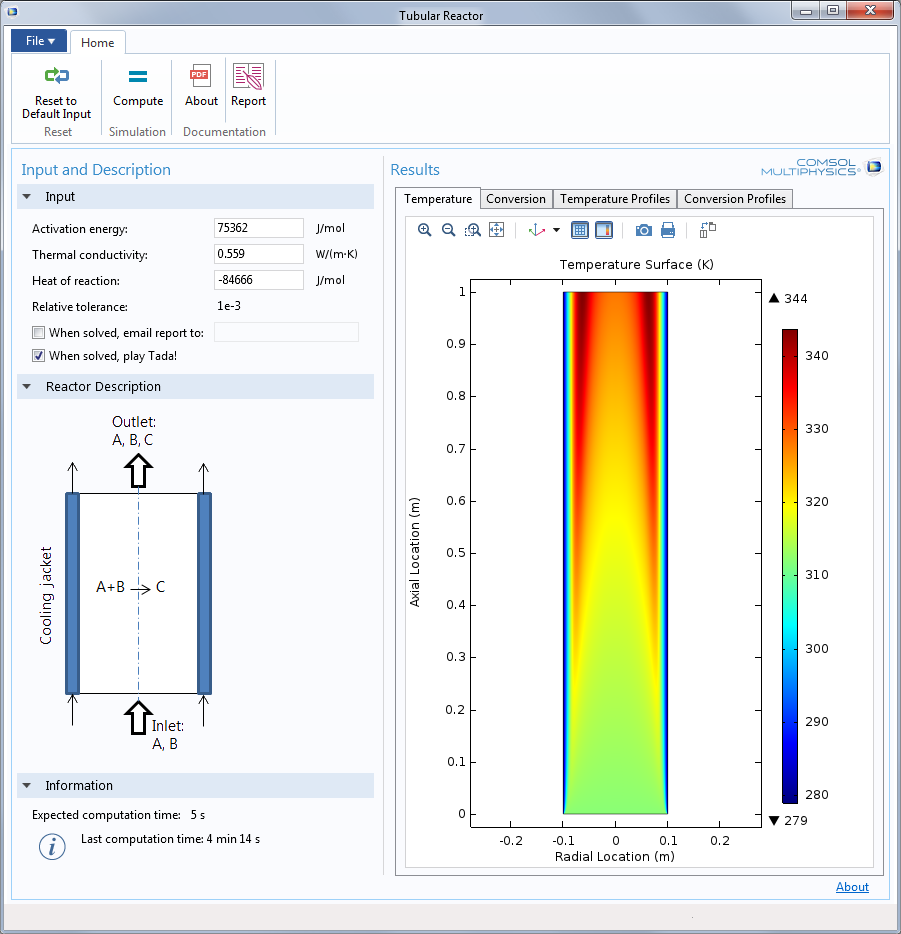
Multiphysics Simulation Is More Accessible with the Application Builder
Learning how to use computational tools requires training. This is why a large group of stakeholders — one that continues to grow — relies on a small pool of experts to perform simulation analyses. The Application Builder, part of the COMSOL Multiphysics® software, is helping to bridge this gap. Simulation experts can now wrap models in an easy-to-use interface, making multiphysics simulation more accessible to a wider audience. See what our customers have to say about the Application Builder.
The Complex Nature of Computational Tools
Computational tools are detail-oriented by nature, with various features and functionality for building and solving models. While the capabilities of these tools enable them to address a range of physics-based problems, it also limits who can use them. Those without modeling expertise, for instance, lack the required training for building and manipulating computational tools. That leaves this job up to a very small group of trained simulation engineers. And while the pool of experts remains small, the demand for multiphysics simulation continues to grow across various industries.
So the question becomes: How does a small group of experts serve an ever-growing group of stakeholders?
Bringing Multiphysics to Many with Simulation Apps
The Application Builder answers this need. As part of COMSOL Multiphysics, this tool provides access to all of the software’s features and functionality. Simulation experts can create an app that hides the complexity of a model under an intuitive and specialized interface. By restricting the available inputs and outputs, the app’s designer decides what users can do, giving both parties confidence in the results.
“When you build a model, you have to get an understanding of how to build the model first,” notes Sebastien Perrier, a mechanical engineer at Echologics Engineering. “When you’re actually using an application or presenting an application, it’s more convenient because you don’t have to explain all the steps [in] that model. You can just literally present your application and make it the format of a tablet [computer], for example, which is really convenient these days.”
Brice McPherson, a development engineer at Wolfspeed, shares a similar point of view. “The simulation apps have the full capabilities of the COMSOL® software behind them, so there are no limitations as to what can be parameterized and studied. What excites me about this is accessibility. Learning how to develop and solve an FEA model requires training, while everyone inherently knows how to fill out a form.”
Here’s a look at two examples of simulation apps.
An app that can help streamline the design of a capacitive touchscreen device.
An app that can be used to efficiently optimize the design of a water treatment basin.
Along with the full capabilities of COMSOL Multiphysics®, the Application Builder provides the added benefit of enabling greater flexibility with Java® API. This further extends an app’s functionality beyond that of the built-in modeling features. Say, for instance, that an app’s designer wants to embed documents or videos in the layout or make the app play a sound when the simulation finishes. The Application Builder makes this possible.
As our Organ Pipe Designer demo app illustrates, apps can be made even more interactive with the addition of sounds.
How Can the Application Builder Help You?
With the flexibility of the Application Builder and the COMSOL Server™ product, a software that makes it easy to manage and access apps, there are many potential use cases.
Here are just some possibilities — a list that will continue to grow over time.
1. Improve Design Workflows and Customer Response Times
In organizations, building apps and giving colleagues access to them can make design workflows more efficient. As McPherson notes: “Our engineering groups can develop and deliver tools across the company to be used by anyone, regardless of background and experience. This approachable distribution of engineering expertise can be exceptionally beneficial for any organization.”

A finned pipe app, like the one highlighted above, allows those with little knowledge of simulation and the physics of heat exchangers to run simulation tests.
This capability, as McPherson mentions, leads to faster customer response times: “We have found the Application Builder to be an essential tool for rapidly responding to our customer needs. With custom analysis applications, detailed studies unique to each customer can be performed quickly and with minimal effort.”
2. Automate Recurring Design Tasks
Recurring design tasks can be time consuming. With the Application Builder, there’s a way to automate this process.
“In the past, we used spreadsheets, look-up tables, or stand-alone simulation models,” McPherson notes. “With customized applications, we can automate this work and tailor each analysis to closely match the specific conditions of each project.”
3. Create an Interactive Learning Environment
Within the classroom setting, teachers can design apps to help students understand complex concepts and introduce them to using simulation software.
Carl Meinhart, a professor of mechanical engineering at the University of California, Santa Barbara, offers insight: “One way that we use the Application Builder at UCSB is in undergraduate instruction. The Application Builder allows one to take physics and simplify it in such a way that students can interact directly with the physics and understand the phenomenon that’s occurring without getting tied down [to] the complexities of the numerical simulation technique.”

Our Tubular Reactor demo app showcases how teachers can use apps to teach complex mathematical modeling concepts to students.
Jos van Schijndel, an assistant professor at the Eindhoven University of Technology, also recognizes the benefits of this approach: “With apps, users can intuitively perform their own simulations without any knowledge of the underlying model details. This is a great benefit for students, as they can play first, see what happens, and then later discover the physics behind it.”
Serving a Growing Simulation Community with Apps
The demand for computational tools is growing, but the group of experts who are trained to use them remains small. This facilitates the need to make multiphysics simulation more accessible to a larger audience. Designing user-friendly and customizable simulation apps with the Application Builder successfully meets this need and paves the way for future success.
How can the Application Builder help you advance your next project? Contact us to discuss your needs and learn more about building apps.
Oracle and Java are registered trademarks of Oracle and/or its affiliates.



Comments (0)